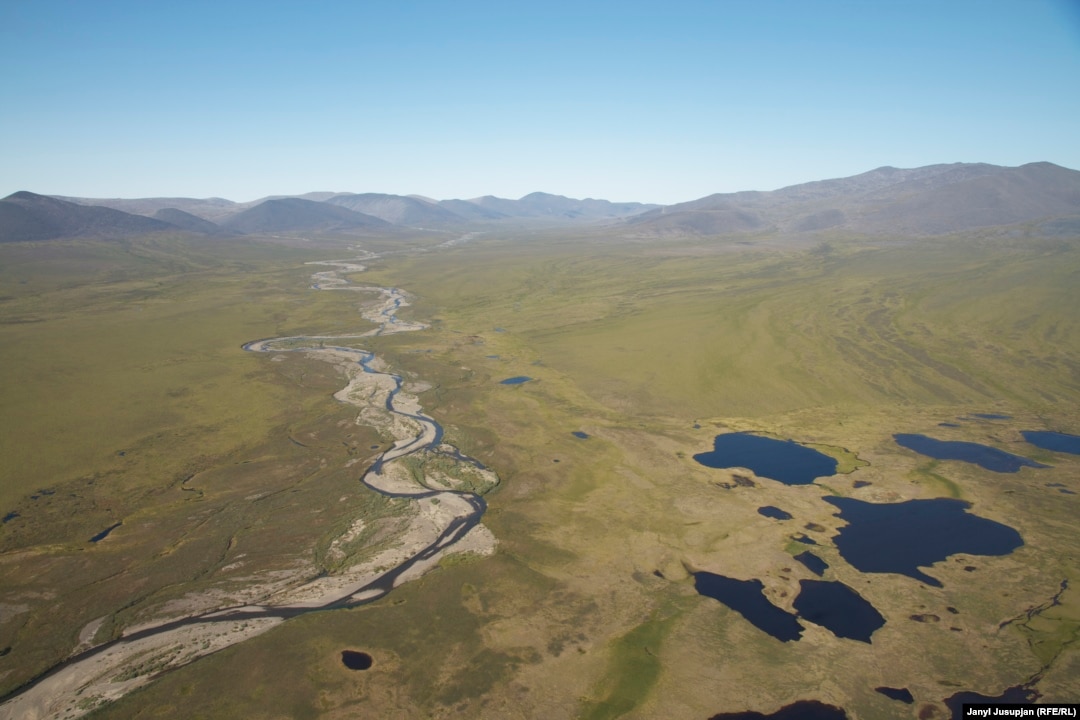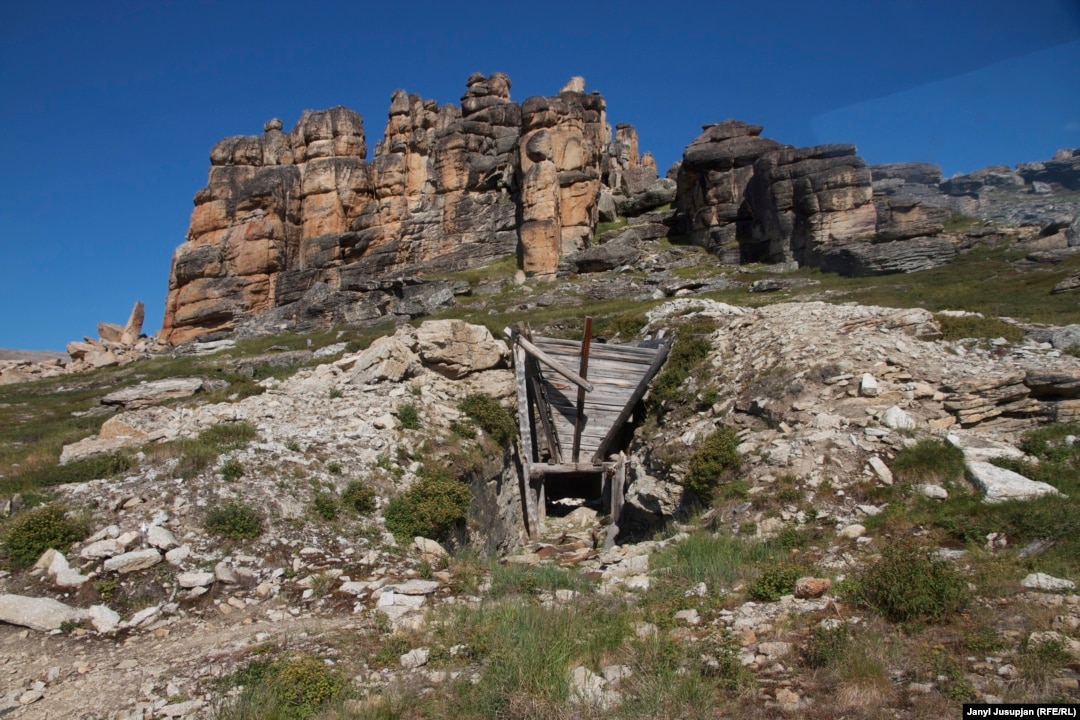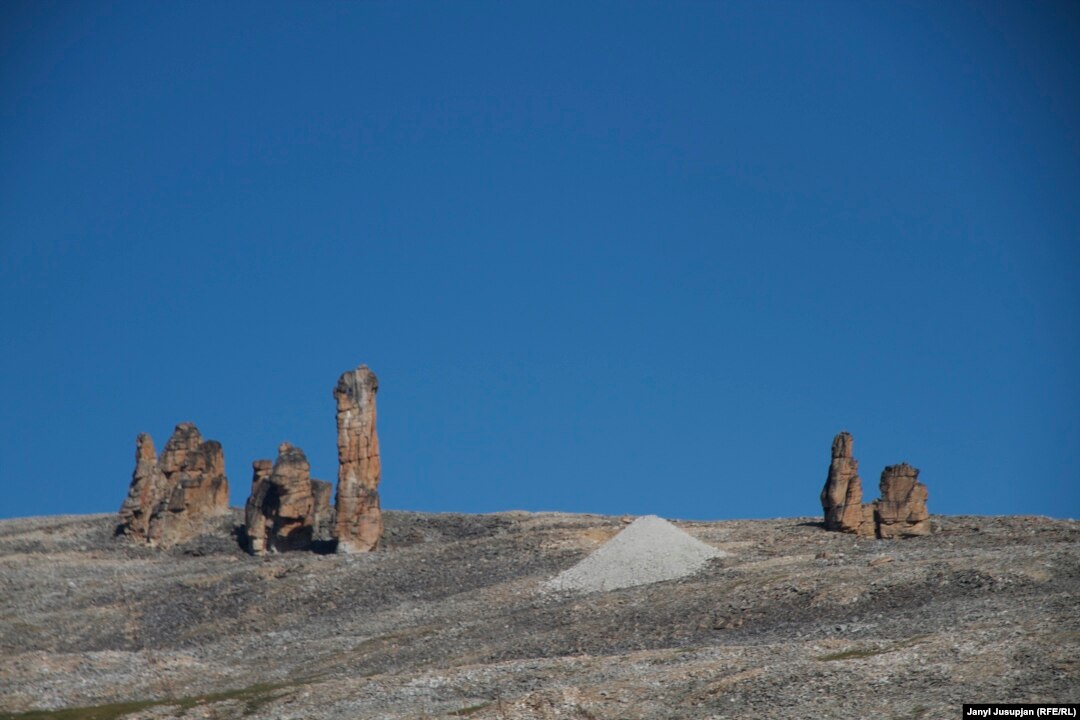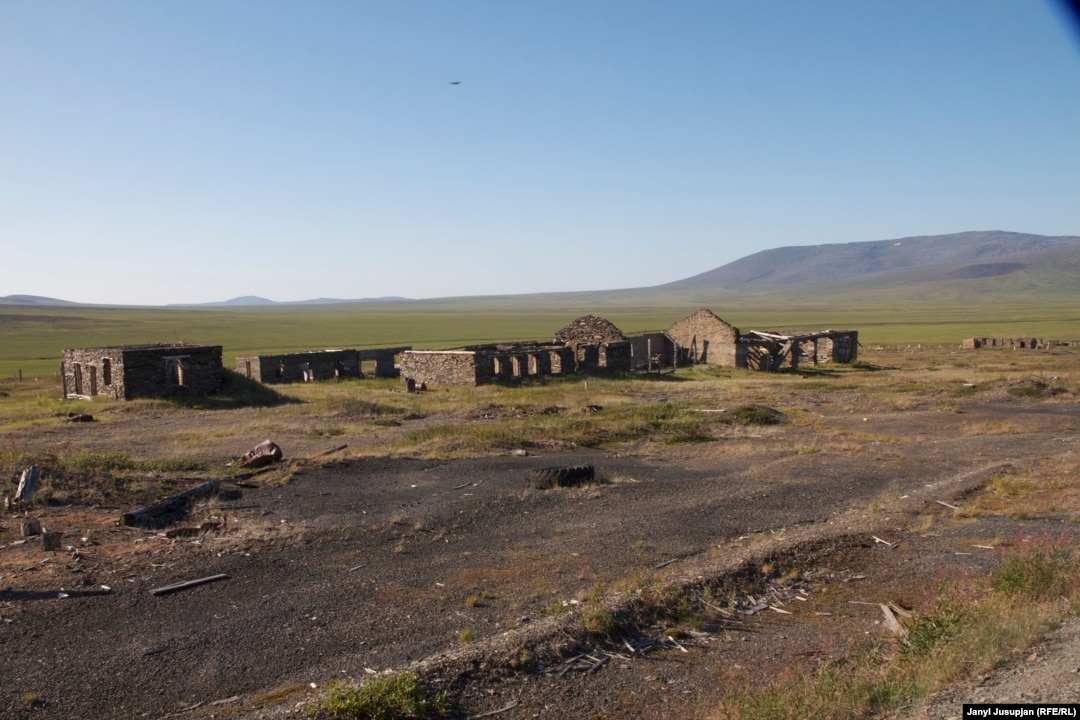The Forgotten Gulag Camps Of Chukotka

An aerial view of Chaunsky district in the Chukotka Autonomous Okrug

A view from a helicopter of an abandoned mine

The entrance to a uranium mine where prisoners were sent to do hard labor. Some prisoners used to say that one of the nearby stone columns resembled Josef Stalin.

Stone outcroppings and mine tailings at the site of a former uranium mine. The region was also a source of tin ore.

The remains of a transit station between the district's main town, Pevek, and the sites of the former gulag camps.
The mines and camps were run by the Far North Construction Trust, an organization set up in 1931 by the Soviet NKVD (the predecessor of the KGB) to manage construction and mining in Chukotka and Magadan, together known as the Kolyma region.
Dalstroy built some 80 gulag camps across the Kolyma region. Its total operations, including camps and mines, covered 3 million square kilometers by 1951.
Another mining complex east of the port town of Pevek. Though the uranium mine has been closed since the 1950s, radiation levels remain high in the area.
In the town of Pevek, a museum displays a recreation of a room at a gulag camp.
Items from a prison camp on display at a museum. The prisoners here in the post-World War II period included Ukrainians, Poles, Germans, Japanese, and Koreans. Those convicted of collaboration with the enemy could receive sentences of up to 25 years.
Between 1954 and 1956, most gulag prisoners were freed under an amnesty declared by Soviet leader Nikita Khrushchev. The unprofitable mines of Chukotka were gradually closed.

